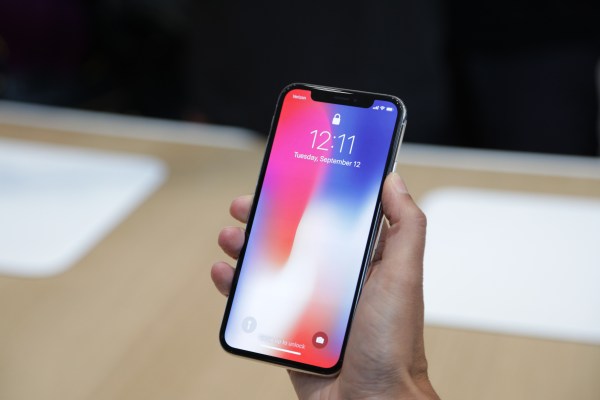At the unveiling of Apple’s new flagship smartphone yesterday, the iPhone X, CEO Tim Cook said it was something the company’s staff had been working on for a decade.
The new premium handset with its edge-to-edge display (minus one unfortunate top notch) does away with the physical home button entirely and makes greater use of gestures for controlling the UI.
The new interface for multitasking looks fluid and intuitive. But it also — if you’ve been smartphone watching for long enough — engenders a distinct feeling of déjà vu…
Specifically it looks rather like webOS running on the Palm Pre — a handset that was announced in 2009, after Jon Rubinstein, former SVP of Apple’s iPod division, had been lured out of retirement in Mexico by Palm: A mobile device company with a (very) long history, and enough self-perspective to realize they needed an experienced product designer to help them surf the next wave of mobility: touchscreen computing.
Rubinstein, who had left Apple in spring 2006, clearly possessed the sought for design chops. Palm execs flew down to Mexico to woo and win their man.
By the start of 2009 Rubinstein was on stage at CES to announce the Palm Pre: A high-gloss, pebble-shaped slider smartphone which deployed multiple gestures in the UI making the most of a touch-sensitive area that extended below the display and onto the bezel itself.
It wasn’t just the scroll-flicks and pinch-to-zooms already on the iPhone and Android devices of the time that Palm had brought over to its next-gen smartphone hardware. It had something else up its sleeve: Its webOS UI incorporated a deck-of-cards activity interface to be the driver for low friction mobile multitasking.
Palm showed how users could easily swipe between and tap on the cards to switch apps. How the order of cards could be rearranged with a finger press and drag. And how individual cards could be flicked off the top of the screen when the user was done with a particular app or task. Cards showed fully active apps. It was simple and elegant.
“Now how’s that for some real newness,” said Matías Duarte, Palm’s senior director of human interface and user experience, with a pretty sizable smirk on his face as he wrapped up that part of the Pre’s CES demo.
(Duarte now works on Google’s card-like Material Design design language, which extends the card motif the company first used in Android, for Google Now, in 2012; and he went straight from Palm to being a VP of design at Android when the feature was being developed.)
In an earnings call later the same month in 2009, Cook was pressed by analysts about how quickly the iPhone’s competitors appeared to be elbowing into the market — and asked how Apple would be able to sustain its leadership.
“We don’t mind competition, but if others rip off our intellectual property, we will go after them,” he responded in a comment that was picked up on and interpreted at the time as a pretty stark warning shot across Palm’s bows.
When pressed again specifically on the Palm Pre, and how the device seemed to “directly emulate the iPhone’s innovative interface”, Cook doubled down on his implied accusation of IP theft: “We don’t want to refer to any specific companies, so that was a general statement. We like competition because it makes us better, but we will not stand for companies infringing on our IP.”
Of course this is all water under the bridge now, as Palm’s dreams of successfully surfing the smartphone wave ended in abrupt disaster — burdened by ongoing legacy software challenges, wrong-footed by carriers’ marketing decisions and ultimately saddled with an unloving acquirer in HP — and the Palm Pre had a cruelly short lifespan for such a forward-thinking device.
I remember how fresh the interface felt in 2009. How hugely advanced vs legacy smartphone players like BlackBerry and Nokia — which, although they were still minting huge revenues back then, were also clearly failing to come to terms rapidly enough with the paradigm shift of touchscreen mobility.
Whether the Palm Pre was truly ahead of its time, or whether elements of the interface had been plucked out of a carefully planned Cupertino 10-year roadmap will be a story for Valley historians to unpick.
But in the iPhone X it’s clear you’re looking at a little ghost of the Pre.
https://twitter.com/WhatTheBit/status/907766637008445441
